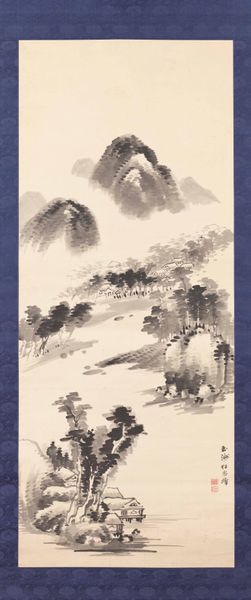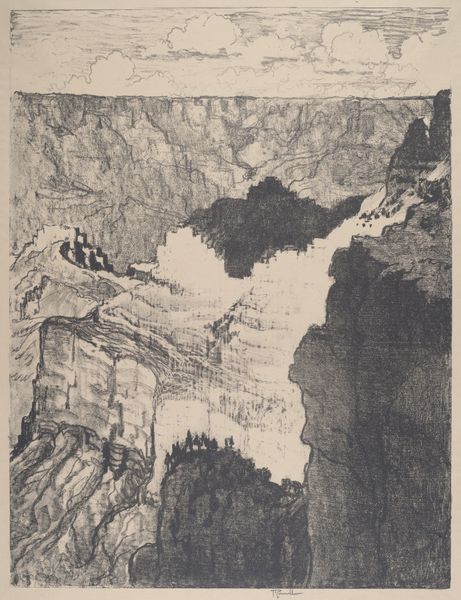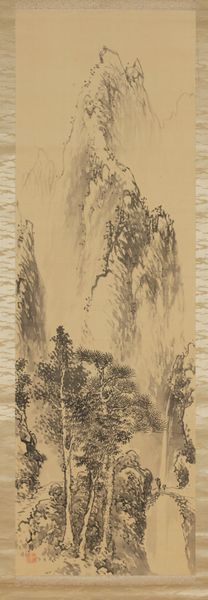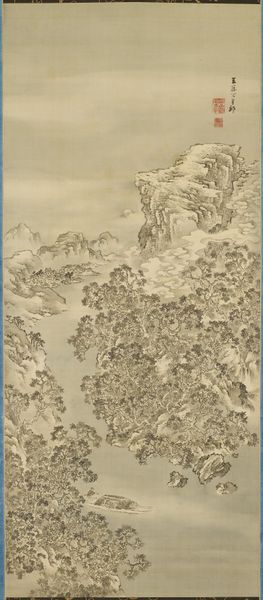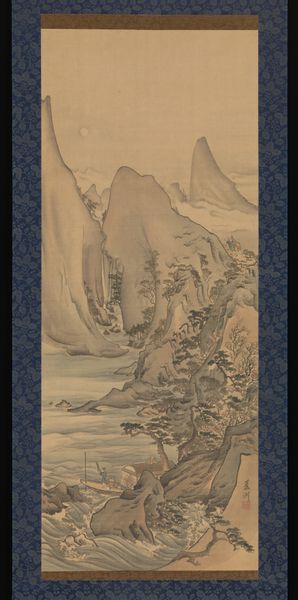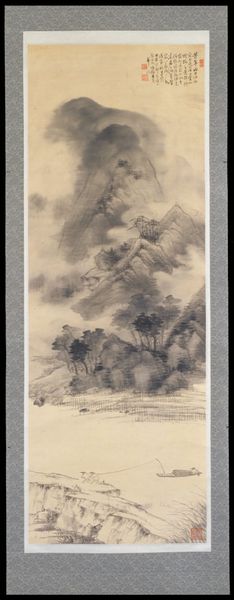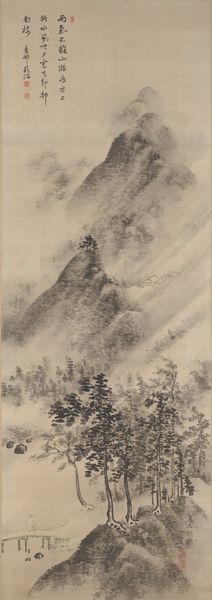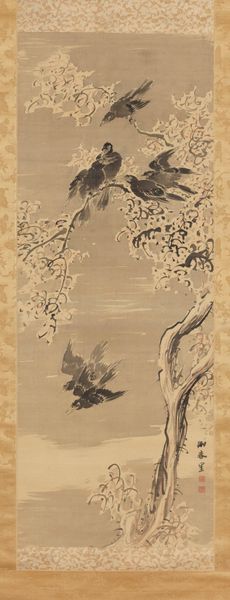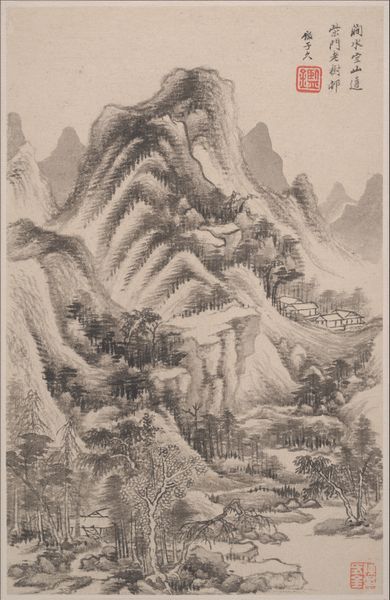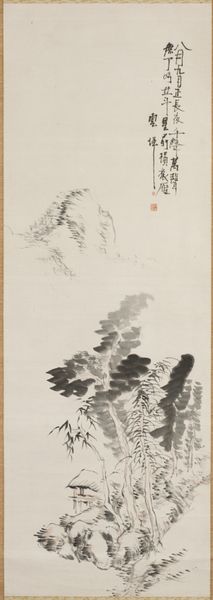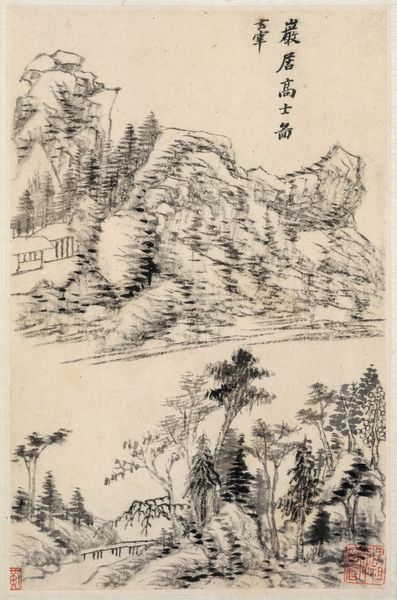
Landscape with a Pavilion late 18th-early 19th century
0:00
0:00
drawing, hanging-scroll, ink
#
drawing
#
ink painting
#
asian-art
#
landscape
#
hanging-scroll
#
ink
#
calligraphy
#
monochrome
Dimensions: 50 1/16 × 15 3/4 in. (127.16 × 40.01 cm) (image)81 3/4 × 21 11/16 in. (207.65 × 55.09 cm) (mount, without roller)
Copyright: Public Domain
Okada Beisanjin made this scroll painting, "Landscape with a Pavilion," using ink on paper. Though these materials seem simple enough, the artist’s skilled manipulation of them yields impressive results. The monochromatic ink creates a range of visual textures, defining the mist-shrouded mountains and the dense foliage surrounding the pavilion. The artist has meticulously controlled the ink’s consistency and application, moving from diluted washes for the background to concentrated, precise lines for the foreground details. Notice how the ink bleeds slightly into the paper's fibers, softening the forms and enhancing the ethereal quality of the landscape. Consider also the social context of literati painting, of which Okada was a master. Such works were not just aesthetic exercises, but demonstrations of cultural refinement and scholarly achievement. The act of painting was itself a form of labor, demanding years of disciplined practice. The finished work embodies both artistic skill and intellectual depth. Appreciating the labor and skill involved allows us to move beyond seeing this as a simple landscape, and to consider the broader cultural values it embodies.
Comments
No comments
Be the first to comment and join the conversation on the ultimate creative platform.

